Astronomy
The sun's corona is weirdly hot, and Parker Solar Probe rules out one explanation
By diving into the sun's corona, NASA's Parker Solar Probe has ruled out S-shaped bends in the sun's magnetic field as a cause of the corona's searing temperatures, according to University of Michigan research published in ...
1 hour ago
0
35
Quantum Physics
Researchers develop general framework for designing quantum sensors
Researchers from North Carolina State University and the Massachusetts Institute of Technology have designed a protocol for harnessing the power of quantum sensors. The protocol could give sensor designers the ability to ...
1 hour ago
0
9

Mucus-based bioink could be used to print and grow lung tissue
Lung diseases kill millions of people around the world each year. Treatment options are limited, and animal models for studying these illnesses and experimental medications are inadequate. ...
Lung diseases kill millions of people around the world each year. Treatment options are limited, and animal models for studying these illnesses and experimental ...
Materials Science
1 hour ago
0
29

Newly created super-black wood can improve telescopes, optical devices and consumer goods
Thanks to an accidental discovery, researchers at the University of British Columbia have created a new super-black material that absorbs almost all light, opening potential applications ...
Thanks to an accidental discovery, researchers at the University of British Columbia have created a new super-black material that absorbs almost all light, ...
Materials Science
1 hour ago
0
1

DART mission sheds new light on target binary asteroid system
In studying data collected from NASA's DART (Double Asteroid Redirection Test) mission, which in 2022 sent a spacecraft to intentionally collide with the asteroid moonlet Dimorphos, ...
In studying data collected from NASA's DART (Double Asteroid Redirection Test) mission, which in 2022 sent a spacecraft to intentionally collide with ...
Astronomy
1 hour ago
0
5
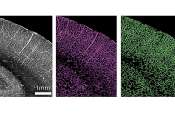
New high-resolution 3D maps show how the brain's blood vessels change with age
Healthy blood vessels matter for more than just heart health. Vascular well-being is critical for brain health and potentially in addressing age-related cognitive decline and neurodegenerative disorders, like Alzheimer's ...
Medical research
1 hour ago
0
0
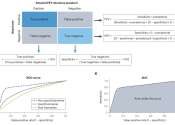
Accuracy of diagnostic blood tests for Alzheimer's disease varies
Neurologists diagnose cognitive impairment with a clinical exam of memory and thinking skills. To determine whether Alzheimer's disease is the cause of the cognitive impairment, evidence of the specific brain changes that ...
Alzheimer's disease & dementia
1 hour ago
0
0
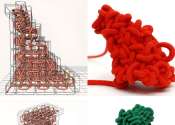
Researchers introduce knitted furniture
Yuichi Hirose has a dream—a dream that someday everyone will have access to a machine capable of knitting furniture.
Robotics
1 hour ago
0
0

Genes or environment? A new model for understanding disease risk factors
Every disease is shaped by a genetic component as well as environmental factors like air pollution, climate and socioeconomic status. However, the extent to which genetics or environment play a role in disease risk—and ...
Health informatics
1 hour ago
0
0

Researchers to present new tool for enhancing AI transparency and accuracy at conference
While large language models (LLMs) have demonstrated remarkable capabilities in extracting data and generating connected responses, there are real questions about how these artificial intelligence (AI) models reach their ...
Machine learning & AI
1 hour ago
0
9

Chronic cough may be hereditary, according to two new studies
Chronic cough is among the most common reasons for seeking medical care, with middle-aged women the group most affected. New studies at Uppsala University also show that this condition appears to be a hereditary phenomenon. ...
Diseases, Conditions, Syndromes
1 hour ago
0
0

Breaking MAD: Generative AI could break the internet
Generative artificial intelligence (AI) models like OpenAI's GPT-4o or Stability AI's Stable Diffusion are surprisingly capable at creating new text, code, images and videos. Training them, however, requires such vast amounts ...
Computer Sciences
1 hour ago
0
0
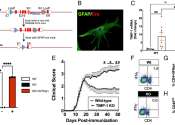
New work focuses on lack of TIMP-1 expression in the brains of MS patients
with a close family member living with multiple sclerosis Stephen J. Crocker, Ph.D., associate professor of neuroscience and immunology at UConn School of Medicine, takes his research personally.
Neuroscience
1 hour ago
0
0

The Future is Interdisciplinary
Find out how ACS can accelerate your research to keep up with the discoveries that are pushing us into science’s next frontier
 Medical Xpress
Medical Xpress

Accuracy of diagnostic blood tests for Alzheimer's disease varies

Genes or environment? A new model for understanding disease risk factors

Chronic cough may be hereditary, according to two new studies

Hydrogen-rich gas inhalation can alleviate exercise-induced fatigue

Drug-chemo combo increases cancer treatment efficacy

Mental health problems often go undetected in youth who die by suicide, analysis suggests

Gastric cancer: Biomarkers identified to predict the risk of relapse

Arthritis drugs may relieve long COVID lung symptoms

AI insights predict disease a decade in advance

Research team uncovers the underpinnings of head and neck cancers

Study finds 8% annual increase in preteen suicide rates since 2008
 Tech Xplore
Tech Xplore

Researchers to present new tool for enhancing AI transparency and accuracy at conference

Breaking MAD: Generative AI could break the internet

AI chatbots exhibit unique decision-making biases, study finds

New 3D integrated metal-oxide transistors to fabricate compact and high density electronics

Researchers collaborate to define language for diverse intelligent systems

What are 'metacrimes?'—and how can we stop them?

Study reveals a way to enhance the efficiency of perovskite solar cells

Musk's superhuman vision promise is dangerous: Researchers

New research framework will help AI chatbots better mimic human conversation

Engineering research finds key to quicker nuclear power: Artificial intelligence

Advances in cathode composite design for sulfide-based all-solid-state batteries

A passive, renewable, more efficient way to extract water from the atmosphere

A strategy to design better materials for thermoelectric power generation

Researchers identify unique phenomenon in Kagome metal
In traditional Japanese basket-weaving, the ancient "Kagome" design seen in many handcrafted creations is characterized by a symmetrical pattern of interlaced triangles with shared corners. In quantum physics, the Kagome ...
Nanophysics
3 hours ago
0
27

Is that glass bottle of orange juice better for the planet than a plastic container?
Which packaging type for a 12-ounce, single-serve container of orange juice would you choose as the most sustainable option:
Environment
3 hours ago
2
108

Study identifies universal blueprint for mammalian brain shape
Researchers have developed a new approach for describing the shape of the cerebral cortex, and provide evidence that cortices across mammalian species resemble a universal, fractal pattern.
Plants & Animals
3 hours ago
0
80

Study finds friendships in America may be in less peril than previously thought
American adults may typically have more friends than indicated by other recent surveys, with fewer Americans having no friends at all—though many would like closer friendships. Natalie Pennington of Colorado State University, ...
Social Sciences
3 hours ago
0
0

Engineers use machine learning to measure chaos in systems
How do we measure chaos and why would we want to? Together, Penn engineers Dani S. Bassett, J. Peter Skirkanich Professor in Bioengineering and in Electrical and Systems Engineering, and postdoctoral researcher Kieran Murphy ...
General Physics
3 hours ago
0
3
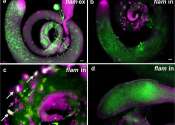
Researchers discover high levels of non-coding RNAs in testes, suggesting new roles in sperm function and evolution
Researchers at the University of Toronto have mapped the spatial distribution of around 700 long non-coding RNAs, otherwise known as lncRNAs, in the testes. The team discovered much higher levels of lncRNAs in the testes ...
Molecular & Computational biology
3 hours ago
0
3
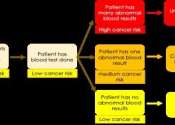
Common blood tests could improve cancer diagnosis for people with stomach pain or bloating
The results of routine blood tests could be used to speed up cancer diagnosis among people with stomach pain or bloating, suggests a study led by UCL researchers.
Oncology & Cancer
3 hours ago
0
0
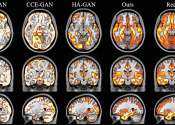
AI brain images create realistic synthetic data to use in medical research
An AI model developed by scientists at King's College London, in close collaboration with University College London, has produced three-dimensional, synthetic images of the human brain that are realistic and accurate enough ...
Medical research
3 hours ago
0
48
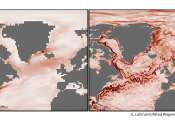
The major Atlantic current that keeps Northern Europe warm could have new variations and tipping points
Northern Europe is relatively warm given its place on the globe. For example, although north of most major Canadian cities, London is warmer than all of them (even Vancouver in British Columbia). But this warmth could disappear ...

Elusive predicted water structure created in the laboratory
Clathrate hydrates are complex water structures that contain foreign guest molecules inside a host water-molecule shell. A predicted clathrate hydrate phase structure has been stably synthesized in the lab and may play an ...
Analytical Chemistry
4 hours ago
0
48

Research warns of 'systematic weaknesses in jury decisions'
There are "systemic weaknesses" in the way juries make decisions—and these are likely to be contributing to the conviction of innocent people, failures to convict the guilty, and inequalities, new research warns.

Study reveals impact of concern about misinformation on Americans' media consumption habits
Most Americans are aware of fake news and misinformation. In a new study, researchers from the University of Pennsylvania sought to uncover whether the threat of misinformation drives Americans to seek out news sources that ...

Repair kit for NASA's NICER mission heading to space station
NASA will deliver a patch kit for NICER (Neutron star Interior Composition Explorer), an X-ray telescope on the International Space Station, on the agency's Northrop Grumman 21st commercial resupply mission. Astronauts will ...

Study links credit availability with regional home prices
Two professors at The University of Texas at Arlington have found that U.S. housing prices have grown more persistently since the mid-1990s, especially in the Midwest and South. They link this steady incline primarily to ...

Carbon credits 'ineffective', says corporate climate watchdog
The world's top judge of corporate climate action on Tuesday described carbon credits as "ineffective" at addressing global warming and a risk for companies trying to reach net zero targets.

Farm families' childcare challenges impacting farm businesses, research suggests
Childcare challenges might not be the first thing that comes to mind when thinking about farm business viability, yet according to a new study led by a Penn State researcher, childcare challenges can negatively impact farm ...

Hidden gatekeepers: How hiring bias affects workers in the food service industry
Businesses across Canada have been bemoaning the lack of qualified workers across numerous industries, including those traditionally viewed as lower-skill occupations.

Art of makeup, art of camouflage: Investigating amount and application of makeup for various situational contexts
Makeup is one of the strategic tools for shaping one's image. To what extent can its intensity and form vary depending on the occasion and context? When and why can it be used as camouflage? Researchers from SWPS University ...

Guaranteed income programs unlikely to improve health but still a valuable tool for alleviating poverty
Guaranteed income programs don't appear to improve the health of recipients, but they remain an important tool to consider for reducing poverty, according to research from University of Michigan and others.

Stem cell harmony: How solanaceae plants maintain homeostasis through receptor compensation
A pivotal study sheds light on the evolutionary conservation of stem cell homeostasis in Solanaceae, revealing how receptor compensation mechanisms ensure the continuous and orderly formation of plant organs. This research ...

I studied ShotSpotter in Chicago and Kansas City—here's what people using this technology should know
Like many large cities in the U.S., Detroit's gun violence rate has fluctuated since the COVID-19 pandemic and the unrest after the murder of George Floyd in 2020. The city's murder rate increased nearly 20% that year, meaning ...

Green synthesis of copper oxide nanoparticles from mangifera indica: A solution for agricultural disease management
A research team has successfully synthesized green copper oxide nanoparticles (CuO.NPs) from Mangifera indica (M. indica) leaf extract. The CuO.NPs showed potent activity against gram-positive and negative bacteria, as well ...

A new model to study regeneration of brown adipose tissues
The prevalence of obesity worldwide has led to an increase in the risk of metabolic diseases and socio-economical burdens. Brown adipose tissue (BAT) has been established as a promising therapeutic target to overcome obesity, ...

What science communicators could learn from marketing professionals
The new romantic comedy "Fly me to the Moon" tells the story of how, in the run up to the Apollo 11 mission, NASA hired a high-flying marketing specialist to bolster public support.

The discovery of a new Earth-like planet could shed further light on what makes a planet habitable
In an exciting breakthrough for astronomy and the search for extraterrestrial life, a team of international scientists has announced the discovery of Gliese 12 b, a temperate, Earth-sized exoplanet just 40 light-years away—a ...

Our beef with 'Big Meat': The power perpetuating Australia's live export trade is at play elsewhere
Australia was once the world's largest exporter of live animals. But exports have declined in recent years.

Rpv34: A novel plasmopara viticola resistance locus discovered in 'Moldova' grapes
A research team identified a P. viticola-resistant locus, Rpv34, in table grapes through analysis of a high-density genetic map with 826 SNPs derived from F1 progenies of "Moldova" (resistant) and "Shine Muscat" (susceptible ...

Children's safer use of technology linked to improved feelings of well-being
New research by the UCD School of Medicine looking at the level of digital skills among children aged 10 and 11 found those with a safe and positive understanding of technology and smart devices enjoyed overall higher levels ...

The genetic blueprint of photosynthesis in citrus: Study identifies key traits and genes to boost fruit production
A research team investigated 71 citrus accessions and varieties using over 56,000 single nucleotide polymorphisms (SNPs) and 37 leaf reflectance parameters to study photosynthesis-related traits. They identified four distinct ...

The right to disconnect is coming to Australia—what does this mean for you?
Next month, changes to the Australian Fair Work Act will give workers the formal right to disconnect from all work communication outside their usual work hours.




























































